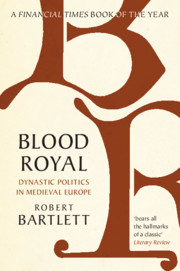Book contents
- Blood Royal
- The James Lydon Lectures in Medieval History and Culture
- Blood Royal
- Copyright page
- Dedication
- Contents
- Figures
- Preface and Acknowledgements
- Abbreviations
- Introduction Royal Families
- Part I The Life Cycle
- Chapter 1 Choosing a Bride
- Chapter 2 Waiting for Sons to be Born
- Chapter 3 Fathers and Sons
- Chapter 4 Female Sovereigns
- Chapter 5 Mistresses and Bastards
- Chapter 6 Family Dynamics
- Chapter 7 Royal Mortality
- Part II A Sense of Dynasty
- Book part
- Notes
- Bibliography of Works Cited
- Index
Chapter 5 - Mistresses and Bastards
from Part I - The Life Cycle
Published online by Cambridge University Press: 09 July 2020
- Blood Royal
- The James Lydon Lectures in Medieval History and Culture
- Blood Royal
- Copyright page
- Dedication
- Contents
- Figures
- Preface and Acknowledgements
- Abbreviations
- Introduction Royal Families
- Part I The Life Cycle
- Chapter 1 Choosing a Bride
- Chapter 2 Waiting for Sons to be Born
- Chapter 3 Fathers and Sons
- Chapter 4 Female Sovereigns
- Chapter 5 Mistresses and Bastards
- Chapter 6 Family Dynamics
- Chapter 7 Royal Mortality
- Part II A Sense of Dynasty
- Book part
- Notes
- Bibliography of Works Cited
- Index
Summary
This chapter begins with a consideration of concubines, that is, women who had a recognized status as social and sexual partners but were not wives, in the Roman empire and early medieval Europe. As the Church exerted stricter control of lay family arrangements, royal concubinage tended to disappear, to be replaced by purely informal, if often powerful, royal mistresses, mainly drawn from the aristocracy. The kings of Castile were notable for their long-term mistresses, whose children were often of political importance. Bastard sons were usually, but not always, excluded from succession to the throne. Examples of those who did become kings are discussed, including Tancred of Sicily, Henry of Trastámara and John of Avis, king of Portugal. Bastard children of rulers were often publicly recognized, and sometimes culturally identifiable through their names or coats-of-arms. There is a full discussion of the way illegitimate children could be legitimized.
- Type
- Chapter
- Information
- Blood RoyalDynastic Politics in Medieval Europe, pp. 155 - 186Publisher: Cambridge University PressPrint publication year: 2020



